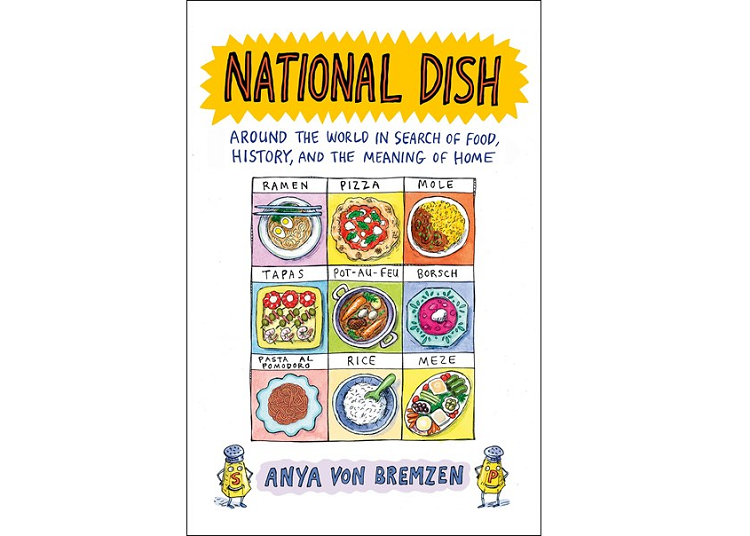Debunking the myth of a ‘national’ dish
August 12, 2023 by DarcieOccasionally we post an article about the (often dubious) origin stories that go hand-in-hand with a particular region or country. One example is the story of pavlova, in which two countries – Australia and New Zealand – both claim ownership of the dish. James Beard award winner Anya von Bremzen looks at origin stories like this in her latest book, National Dish: Around the World in Search of Food, History, and the Meaning of Home.

Anya’s book takes us on a journey from France to Italy to Japan to Mexico and the United States to discover how food origin stories are integrated into a country’s history, and to dispel what are quite often myths, as charming or popular as they may be. National Dish also illustrates how often political considerations come into play for foods that are linked with a national identity. Gastro Obscura recently interviewed Anya about her newly-released book.
In the interview, Anya explains how a country’s policies can affect what its citizens eat, noting how the United States promoted wheat to many other countries following WWII, in part to find a market for its excess production. Countries that relied on other grains suddenly started consuming products containing wheat flour, ushering in a seismic shift in the foods eaten in many regions. Anya also notes that France was the first country that “identified what a national cuisine might be and how cuisine is part of a country’s soft power”. When asked if it bothered her to say that a particular food origin story was a myth, Anya replied that she “found it actually fascinating and in a way empowering. It doesn’t diminish [a dish]. If anything, it enriches it because it shows us how food is such a powerful entryway into a culture.”
Categories
- All Posts (6940)
- Antipasto (2135)
- Author Articles (247)
- Book News (935)
- Cookbook Giveaways (983)
- Cookbook Lovers (257)
- Cooking Tips (109)
- Culinary News (299)
- Food Biz People (552)
- Food Online (791)
- Holidays & Celebrations (272)
- New Cookbooks (149)
- Recipes (1500)
- Shelf Life With Susie (231)
- What's New on EYB (133)
Archives
Latest Comments
- kmwyman on Rooza by Nadiya Hussain – Cookbook Review and Giveaway
- Maryd8822 on The Golden Wok – Cookbook Giveaway
- Dendav on Danube Cookbook Review and Giveaway
- sanfrannative on Rooza by Nadiya Hussain – Cookbook Review and Giveaway
- darty on Danube Cookbook Review and Giveaway
- Atroyer7 on Danube Cookbook Review and Giveaway
- demomcook on What foods do you look forward to the most for each season?
- demomcook on Danube Cookbook Review and Giveaway
- Darcie on How cookbooks can help build resilience
- mholson3 on Danube Cookbook Review and Giveaway